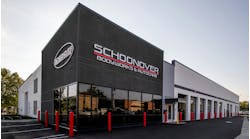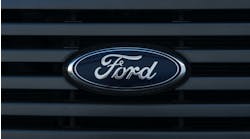June 8, 2018—A federal panel said Thursday that the driver of a Tesla vehicle using the company's self-driving technology, did not touch the steering wheel in the six seconds before he was killed, reported USA Today.
The Model X driver, Walter Huang, died March 23 when his vehicle crashed into a concrete lane divider and careened into oncoming lanes in Mountain View, Calif., according to the report.
The National Transportation Safety Board said Thursday in a preliminary report on the crash that Tesla's system did not detect the driver's hands on the steering wheel for 26 of the final 60 seconds leading up to the collision.
According to performance data downloaded from the crash vehicle, a 2017 Tesla Model X P100D, the driver was using traffic-aware cruise control and autosteer lane-keeping assistance, which are advanced driver assistance features that Tesla refers to as autopilot. The vehicle was approaching the state Highway 85 interchange, traveling south on U.S. Highway 101, in the second lane from the left — a high-occupancy-vehicle lane.
A preliminary review of the Tesla’s recorded performance data showed:
- The Autopilot system was engaged on four separate occasions during the 32-minute trip, including continuous operation for the last 18 minutes and 55 seconds prior to the crash.
- In the 18 minutes and 55 seconds prior to impact, the Tesla provided two visual alerts and one auditory alert for the driver to place his hands on the steering wheel. The alerts were made more than 15 minutes before the crash.
- The driver’s hands were detected on the steering wheel for a total of 34 seconds, on three separate occasions, in the 60 seconds before impact. The vehicle did not detect the driver’s hands on the steering wheel in the six seconds before the crash.
- The Tesla was following a lead vehicle and traveling about 65 mph, eight seconds before the crash.
- While following a lead vehicle the Tesla began a left steering movement, seven seconds before the crash.
- The Tesla was no longer following a lead vehicle four seconds before the crash.
- The Tesla’s speed increased — starting three seconds before impact and continuing until the crash — from 62 to 70.8 mph. There was no braking or evasive steering detected prior to impact.
Days after the crash, Tesla said in a blog post that "the reason this crash was so severe is because the crash attenuator, a highway safety barrier which is designed to reduce the impact into a concrete lane divider, had been crushed in a prior accident without being replaced. We have never seen this level of damage to a Model X in any other crash", reported USA Today.



